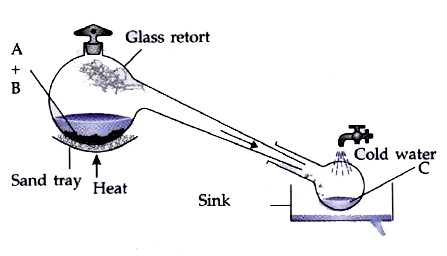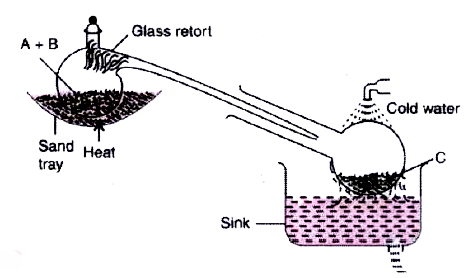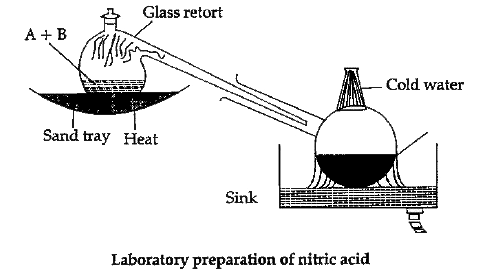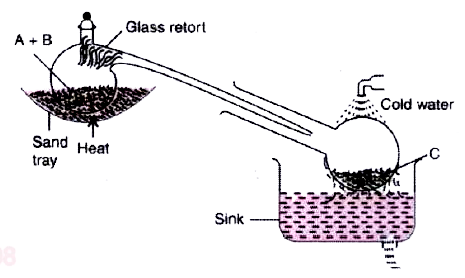The figure given alongside illustrates the apparatus used in the laboratory preparation B of nitric acid.

Name A (a liquid), B (a solid) and C (a liquid) (Do not give the formulae)
(A) An acid which has high affinity for water.
(B) A metallic nitrate and the atomic number of metal is 19
Topper's Solved these Questions
Similar Questions
The figure given below illustrates the apparatus used in the laboratory preparation of nitric acid.
Name A (a liquid), B(a solid) and C(liquid). (Do not give the formulae)

View SolutionAll glass apparatus is used in the laboratory preparation of nitric acid. Explain ?
View SolutionWhat is the special feature of the apparatus that is used in the laboratory preparation of nitric acid?
View SolutionExplain the following :
All glass apparatus is used in the laboratory preparation of nitric acid .
View SolutionThe figure given below illustrates the apparatus used in the laboratory preparation of nitric acid.

Complete the following:
_____ is oxidised by nitric acid.
View SolutionThe figure given alongside illustrates the apparatus used in the laboratory preparation B of nitric acid.

Write the equation for the reaction in which copper is oxidized by concentrated nitric acid.
View SolutionThe figure given below illustrates the apparatus used in the laboratory preparation of nitric acid.
Write an equation to show how nitric acid undergoes decomposition.

View SolutionThe figure given below illustrates the apparatus used in the laboratory preparation of nitric acid.
Write the equation for the reaction in which copper is oxidised by concentrated nitric acid.

View SolutionWith respect to the laboratory preparation of hydrochloric acid answer the following question :
Name the substance A and give its use .
View SolutionGive reasons for the following - pertaining to the above laboratory preparation of nitric acid
(i) concentrated hydrochloric acid is not used as a reactant in the laboratory preparation
the complete apparatus in the laboratory preparation does not contain parts made of rubber or cork. ,
(iii) the reaction temperature is maintained below 200∘C
(iv) at high temperatures the sodium sulphate or potasium sulphate formed , forms a crust and sticks to the glass apparatus .
View Solution